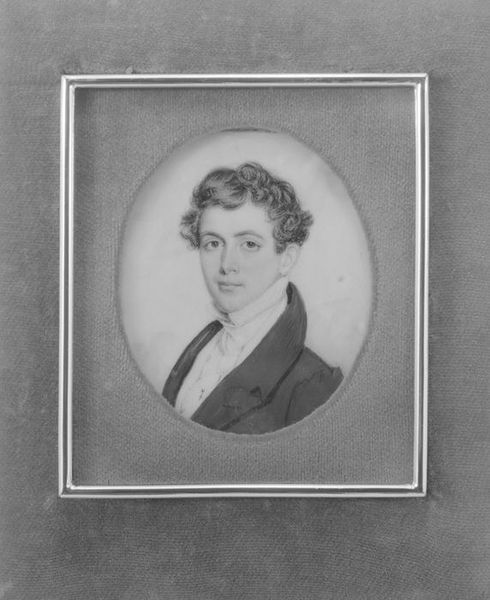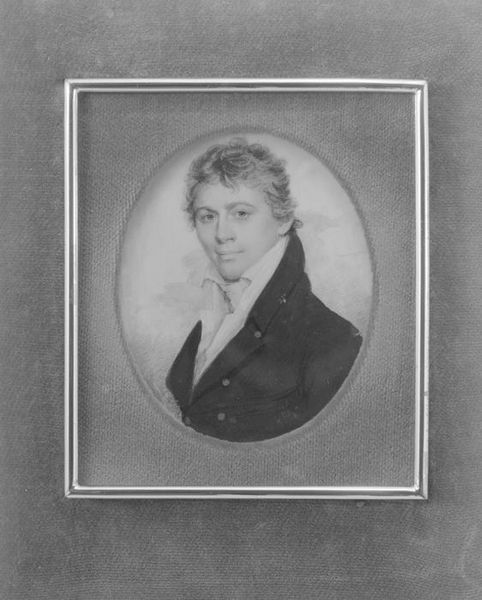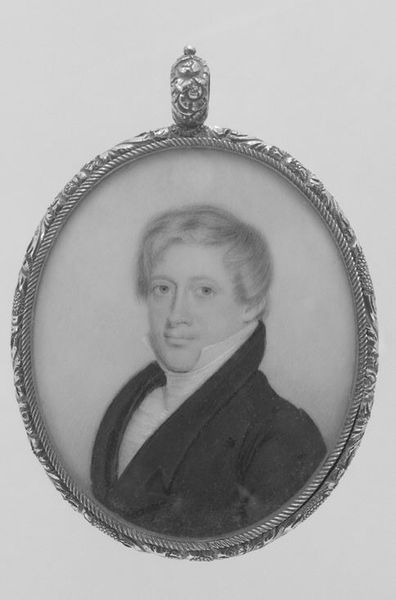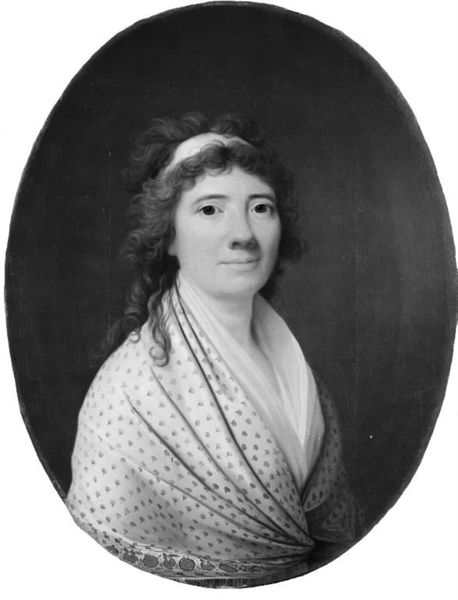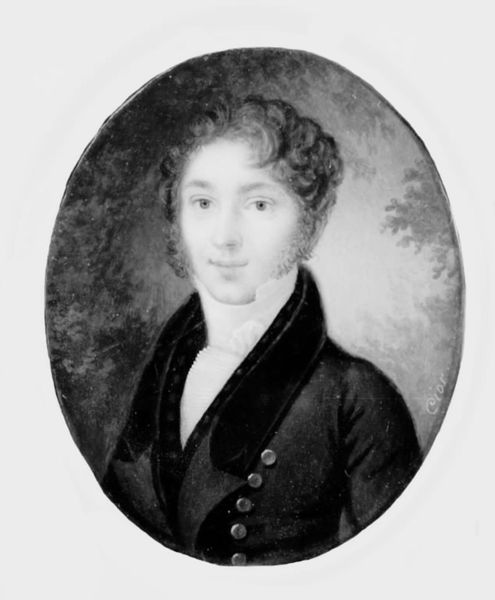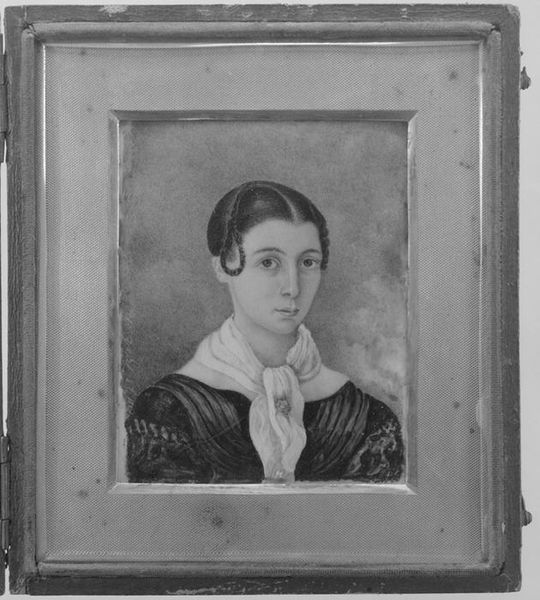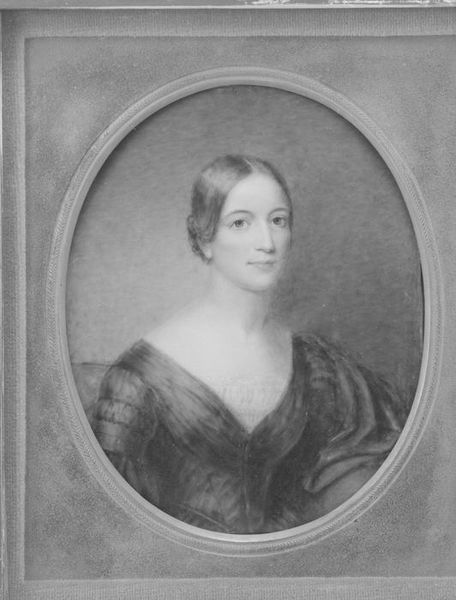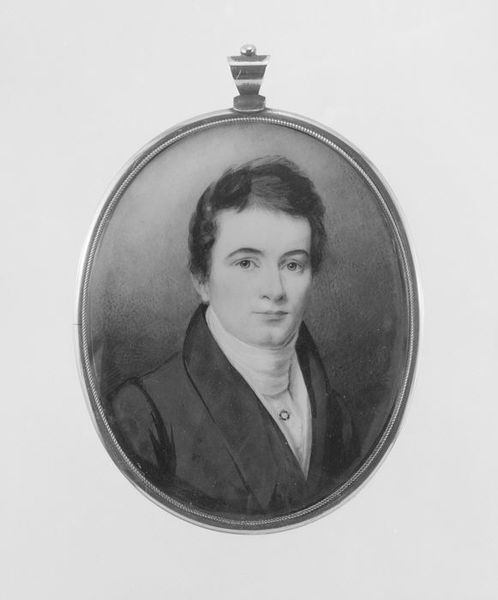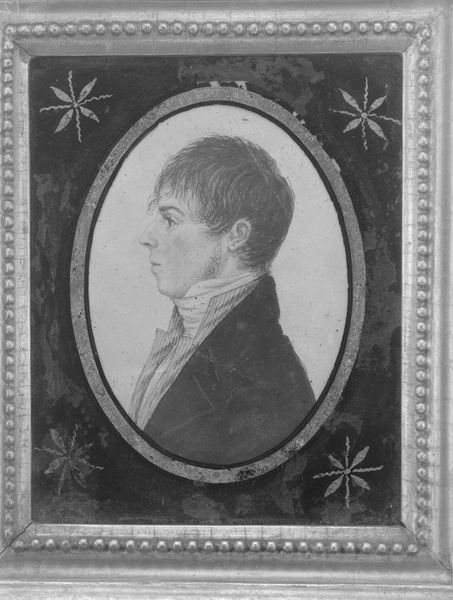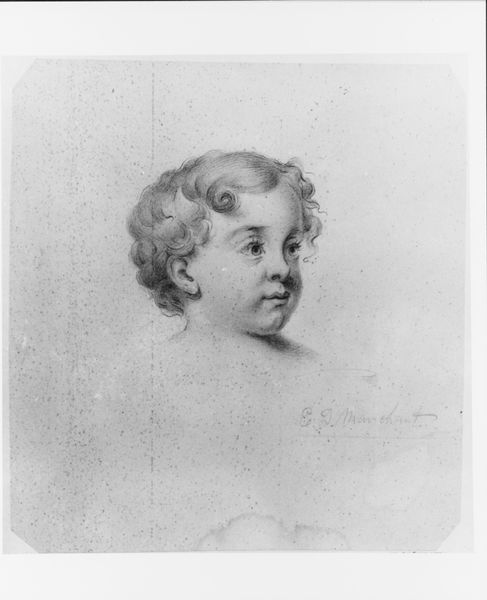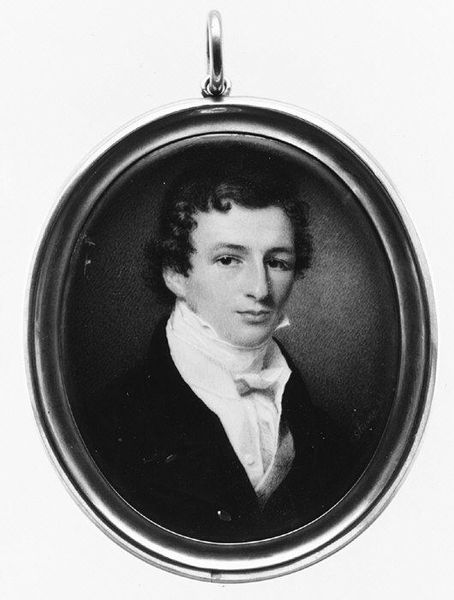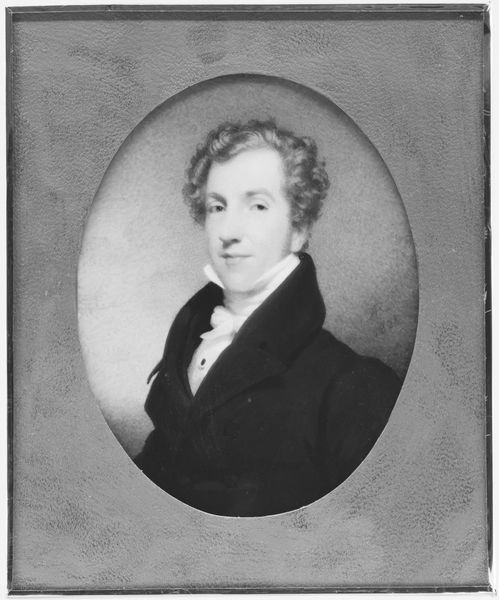
painting
#
portrait
#
painting
#
framed image
#
romanticism
#
black and white
#
academic-art
#
monochrome
#
realism
#
monochrome
Dimensions: 3 3/16 x 2 5/8 in. (8.2 x 6.7 cm)
Copyright: Public Domain
Curator: Before us, we have Thomas Seir Cummings' "Portrait of a Gentleman," likely rendered between 1825 and 1830. Its home is here at the Metropolitan Museum of Art. Editor: Immediately, the somber, almost monochromatic palette strikes me. There's a stillness, a reserved quality. It's as if the very essence of formality has been captured and contained within the frame. Curator: The composition adheres strictly to the conventions of portraiture during this era, doesn't it? The sitter is positioned centrally, his gaze direct, his figure occupying the majority of the picture plane. There is an evident intent to accurately portray not only his likeness, but his station. Editor: Yes, and those sartorial choices – the high-collared shirt, the meticulously tailored coat – these are potent symbols. They whisper of social status, of a world governed by codes and hierarchies. Note also that the darker shades envelope him, imbuing the sitter with a degree of guardedness. Curator: Agreed. And the meticulous attention to detail – the subtle gradations of tone that model his face, the precise rendering of his garments – all point to a highly skilled hand, an academic understanding of form and light. One observes how these formal attributes generate meaning. Editor: For me, this restraint emphasizes a kind of archetypal male identity of the time. Think of restraint and duty as prime virtues, and the image speaks to a perceived moral order. The very lack of expressive color allows other cues to rise into dominance and carry a heavy symbolic weight. Curator: Indeed, it adheres tightly to visual systems operating within that Romantic-Realist stylistic boundary. By restricting the use of color, Cummings enhances our perception of value. There’s a heightened sense of contrast—observe, for example, how it enhances volume in the gentleman's draped jacket. Editor: And looking deeper, it’s more than just skill. I see a longing, a desire to connect with some higher ideal. It's that hint of melancholy in his gaze, hinting towards romanticism as an ideology, not just as an artistic form. That for me becomes one of its enduring stories, as an echo of something universally understood. Curator: Precisely. Through its studied application of line, tone, and texture, the work conveys a precise arrangement and meaning; in other words, it perfectly signifies its historical milieu. Editor: It becomes, then, not just a portrait, but an artifact imbued with psychological weight. And as that weight shifts, and viewers change across eras, new perspectives and dialogues inevitably emerge.
Comments
No comments
Be the first to comment and join the conversation on the ultimate creative platform.
